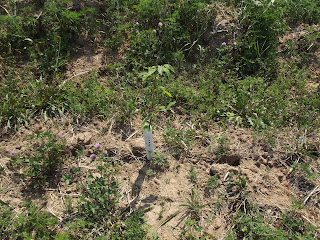a little something I wrote for a newsletter I contribute to.
Petroleum, especially in the form of gasoline, is one of the most useful, dense sources of energy that we have. People knew about oil seeps and crude oil for quite a while. They had been daubing tar on roofs for water proofing, and were starting to learn how to thermally crack crude and distill lamp oil. But, it was a minor commodity until 1858, when Edwin Drake figured out how to drill and collect significant amounts of crude oil. The whales were of course thrilled, and we have been on one heck of a rush since then, replacing untold hours of backbreaking labor with fossil fuel energy, and completely transforming our lifestyles. People quickly invented things to make use of this abundant energy source. No need for slaves, no need for chopping wood for heat, no need for horses and the accompanying mess in city streets. What was not to like?
A central key to this renaissance is that the amount of effort (energy) needed to find and extract the oil is much less than that which is then utilized. If Edwin had needed to burn a barrel worth of crude oil in his steam engine drill in order to get a barrel of crude out of the ground, he would have been wasting his time, and we would still be riding horses. However, the amount of energy returned for the amount of energy invested, “energy return on energy invested, or EROEI ” was very high, and got even higher as technology improved and large, easy to pump oil fields were found. Once people realized you could drill and find oil, and get rich, they drilled everywhere. During the heyday of discovery of gusher oil wells and discovery of the largest oil fields, it was common for the EROEI to be 100. The energy equivalent of one barrel of oil would net back energy of 100 barrels. Well, as we all know, the easy, best fields were found first, creating several millionaires.
Unfortunately, as we have used the best oil fields, the remaining oil in the ground is not only harder to find, its EROEI is getting lower by the year. At some point, it will no longer be worth drilling for. So think about that. Even though we might have lots of oil still technically recoverable, it will be so deep or so diffuse, it will take as much energy to extract as what is recovered. That is the inevitable trend that we are facing, and is really more relevant than “peak oil” to how long we can rely on crude oil to power our society.
Now, energy accounting can get complicated, because the flexibility in use and the ability to convert from one form to another more useful form are also important. Also, calculating all the energy that was invested to get “new” energy gets into the area of embodied energy and emergy - a term that describes the quality, or usefulness of energy.
Wikipedia provides more details on emergy, for those who would like to dig deeper.
Where are we today? How soon will we reach that point of diminishing returns? Keeping in mind the above-mentioned difficulty in its calculation, EROEI is still a critical metric for evaluating how easy it will be to keep our economy going without major disruption. For crude oil in the U.S. EROEI is as low as 3 now, and even in Saudi Arabia, it is only around 10-20. Efficiency retrofits (both industrial and in the home)have a good EROEI, wind turbines come in around 20, biodiesel and ethanol are only a little above 1.
So, we have some tough choices facing us right now. What will we do? Until we figure out the path forward, I would recommend maximizing efficient use of oil in everything you do.













